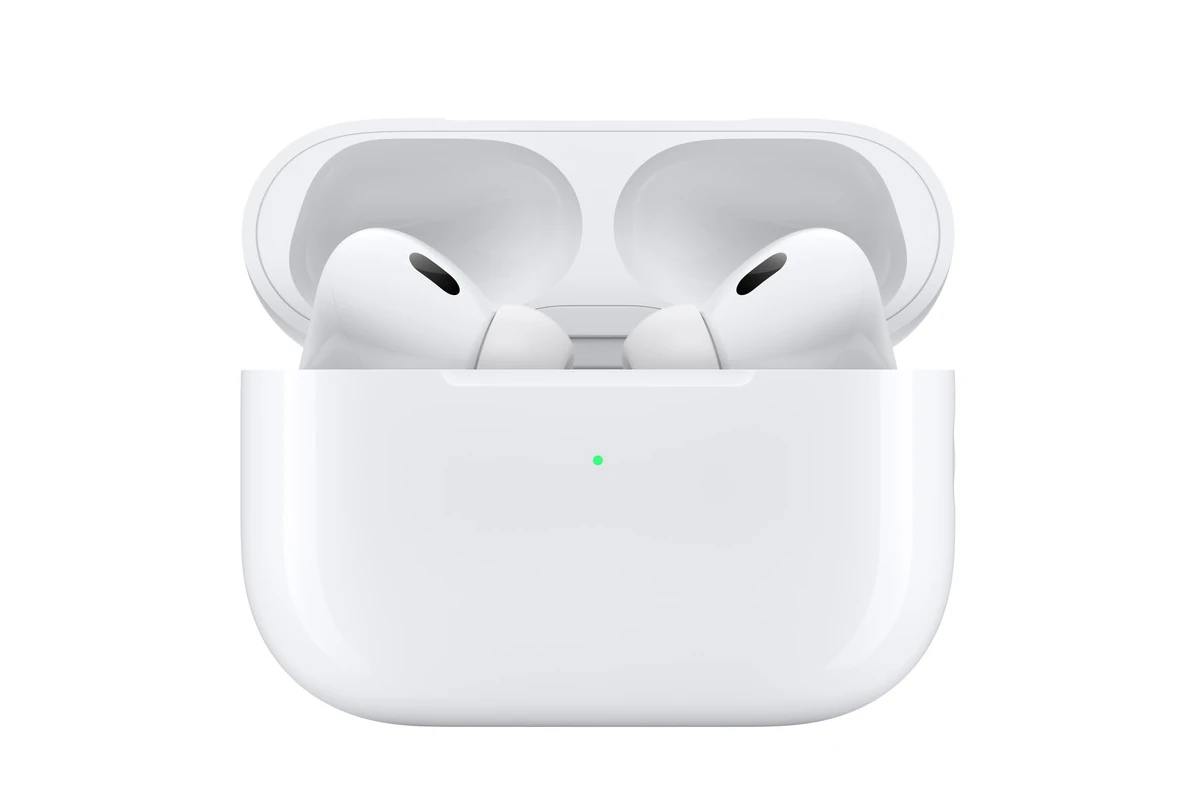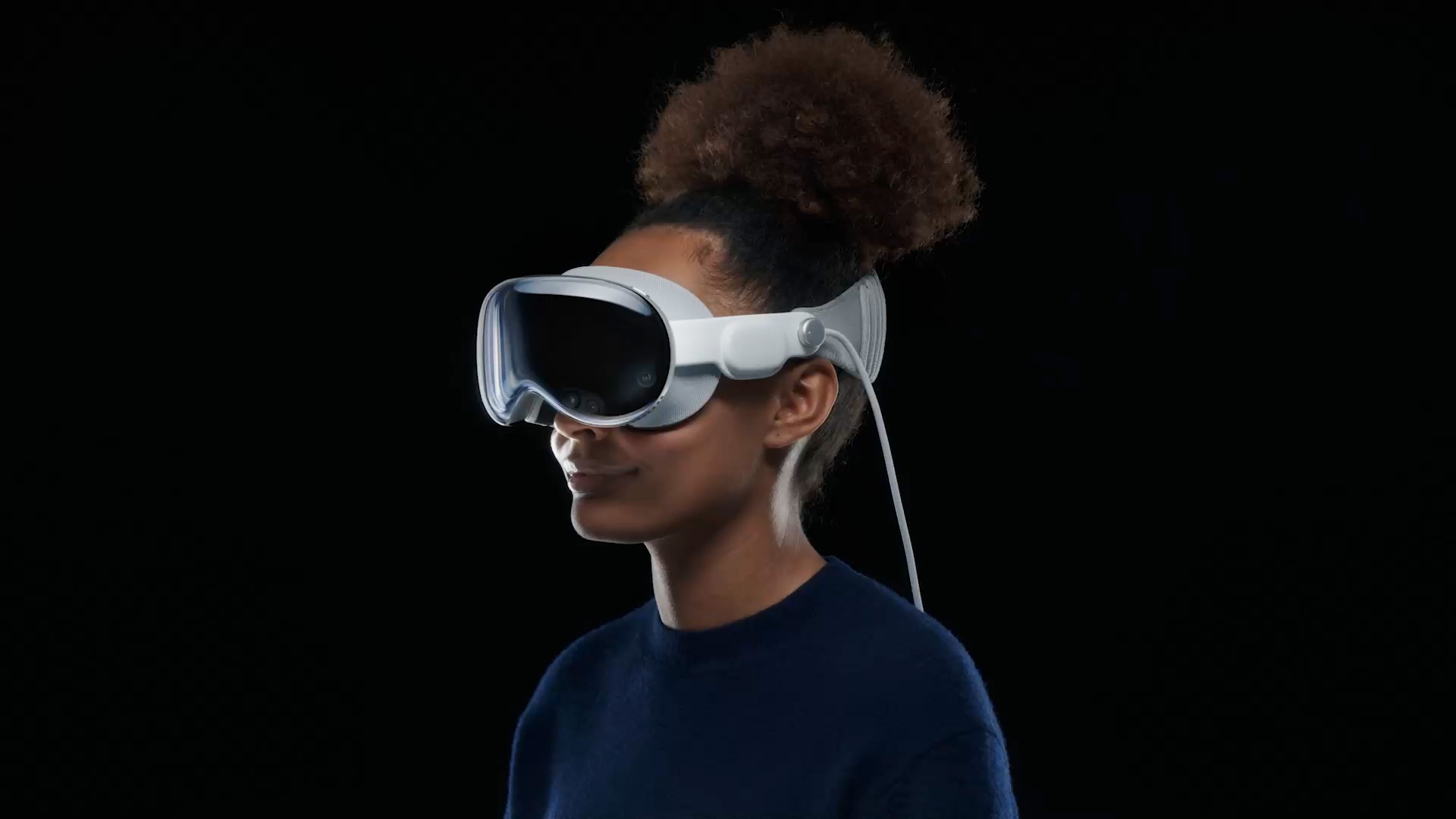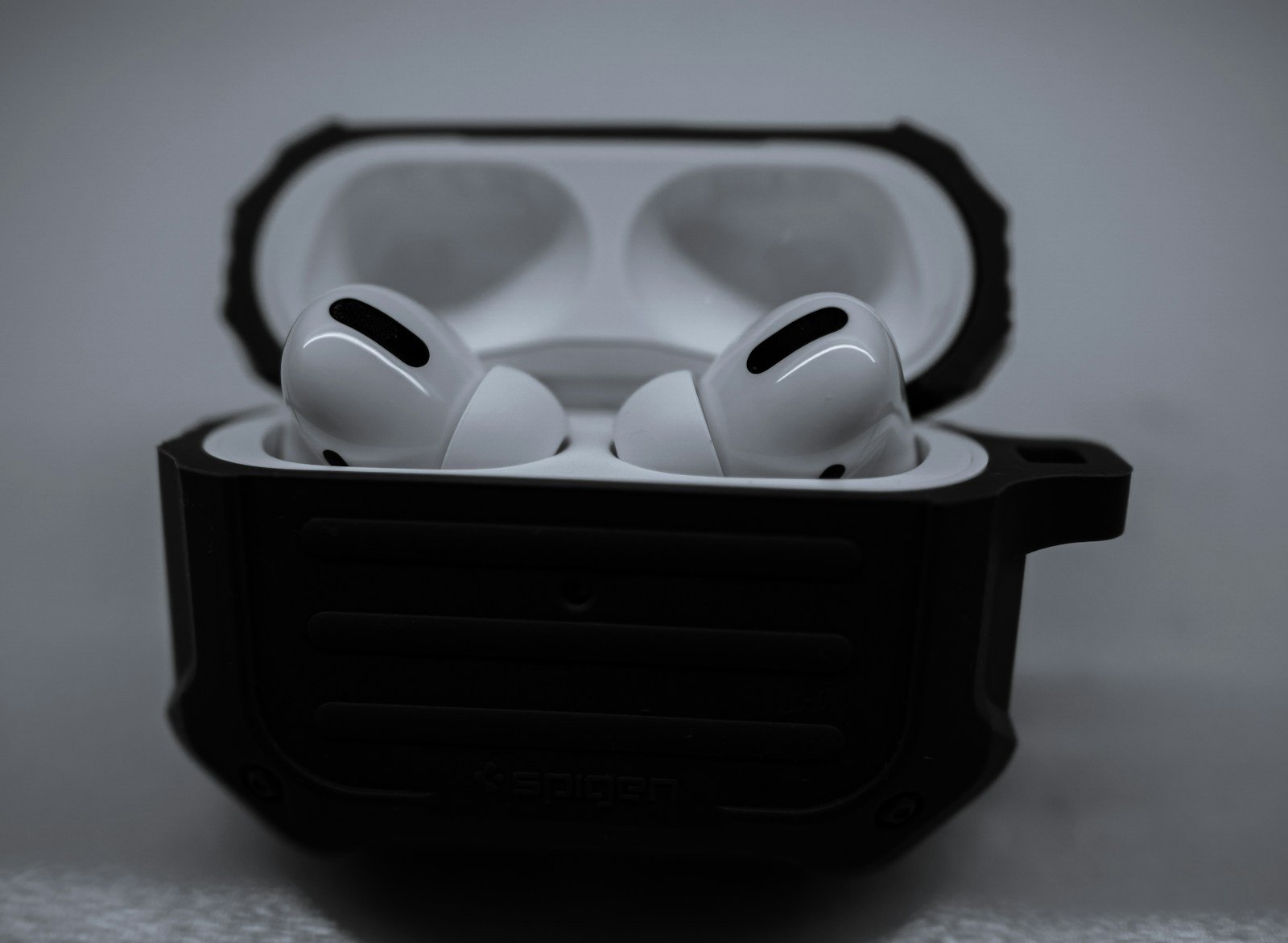Apple is once again poised to redefine the boundaries of personal technology with the upcoming launches of the AirPods Pro 3 and Vision Pro 2. Both devices promise to elevate user experience by combining cutting-edge hardware, advanced software, and seamless ecosystem integration. As Apple continues to innovate, these next-generation products are set to transform how we listen, interact, and immerse ourselves in digital environments.
AirPods Pro 3: A Leap Forward in Audio and Health Tech

The AirPods Pro 3 have been the subject of intense anticipation, with leaks and rumors pointing to a significant redesign and feature set that goes beyond just improved sound quality.
Design and Comfort:
Apple is reportedly moving towards a more compact, ergonomic design with shorter stems and customizable ear tips that enhance comfort and noise isolation. This redesign not only improves wearability but also makes the AirPods Pro 3 more discreet and stylish, appealing to a broader audience.
Audio Quality and Active Noise Cancellation:
The new AirPods Pro 3 are expected to feature upgraded drivers and spatial audio capabilities that deliver richer, more immersive soundscapes. Enhanced Active Noise Cancellation (ANC) will adapt dynamically to different environments, providing a superior listening experience whether you’re in a noisy café or a quiet home office.
Health and Fitness Monitoring:
One of the most exciting additions is the integration of health sensors. According to recent reports, Apple is incorporating biometric tracking features such as heart rate monitoring and possibly even blood oxygen measurement directly into the AirPods Pro 3. This aligns with Apple’s broader health ecosystem, complementing the Apple Watch and iPhone health apps to offer users holistic wellness insights.
Battery Life and Connectivity:
Users can expect longer battery life with faster charging capabilities. The new H2 chip is rumored to power these earbuds, providing more efficient wireless connectivity and smarter power management, ensuring seamless pairing and lower latency.
Vision Pro 2: The Future of Mixed Reality

Apple’s Vision Pro headset made waves when it debuted, introducing a new era of spatial computing. The Vision Pro 2 is anticipated to build on this foundation with substantial improvements that could make mixed reality (MR) an everyday tool for millions.
Enhanced Display and Optics:
Vision Pro 2 is expected to feature brighter, higher-resolution micro-OLED displays, delivering sharper visuals and more vibrant colors. This upgrade will enhance immersion, making virtual objects indistinguishable from reality and improving user comfort during extended use.
Improved Performance and Battery Life:
Powered by next-generation Apple silicon, likely the M3 or newer chip, the Vision Pro 2 will offer faster processing and better energy efficiency. This means smoother graphics rendering, quicker app launches, and longer untethered sessions without compromising performance.
Advanced Sensors and Interaction:
The new headset will incorporate more sophisticated eye tracking, hand gesture recognition, and possibly even full-body tracking, reducing the need for physical controllers. These advancements will enable more natural and intuitive interactions with digital content, whether for gaming, productivity, or creative work.
Expanded Ecosystem and Applications:
Apple is investing heavily in developer tools and partnerships to expand the Vision Pro app ecosystem. Expect new applications in education, healthcare, design, and remote collaboration, making the headset a versatile device beyond entertainment.
Why These Devices Matter
Together, the AirPods Pro 3 and Vision Pro 2 represent Apple’s vision for a more connected, immersive, and health-conscious future. The AirPods Pro 3 push the boundaries of what wireless earbuds can do by blending premium audio with health monitoring, while Vision Pro 2 aims to make mixed reality an accessible and practical part of everyday life.
This dual launch underscores Apple’s strategy of creating a tightly integrated ecosystem where devices complement and enhance each other. For example, the Vision Pro 2 can leverage spatial audio from the AirPods Pro 3 for a fully immersive experience, while health data collected from the earbuds can sync seamlessly with the broader Apple Health platform.
Market Impact and Consumer Expectations
Industry analysts predict strong demand for both devices, especially as consumers increasingly seek products that blend entertainment, productivity, and wellness. The AirPods Pro line already dominates the premium earbuds market, and the new health features could give Apple a competitive edge against rivals like Sony and Bose.
Meanwhile, the Vision Pro 2 could accelerate mainstream adoption of mixed reality technology, a sector currently led by niche players like Meta and Microsoft. Apple’s focus on user experience, design, and ecosystem integration positions it well to capture significant market share.
Final Thoughts
As Apple prepares to launch the AirPods Pro 3 and Vision Pro 2, the tech world is watching closely. These devices are more than just incremental upgrades; they represent a bold step toward a future where technology is seamlessly woven into our daily lives, enhancing how we hear, see, and interact with the world.
For consumers, this means richer audio experiences, innovative health tracking, and immersive digital environments that empower creativity and productivity. Apple’s next-gen devices are set to revolutionize user experience in ways that only Apple can deliver.
Stay tuned for the official announcements and detailed reviews as these groundbreaking products hit the market.
For the latest updates on Apple’s upcoming releases, keep an eye on trusted tech news sources and Apple’s official channels.
New AirPods Coming In 2025
Apple’s next wave of audio tech is coming soon! The AirPods Pro 3 are expected to launch in 2025, with rumors pointing to a fall release. While the standard AirPods 4 are already available with the powerful H2 chip, many fans are holding out for the premium Pro version. The new AirPods Pro 3 will likely feature better sound quality, improved noise cancellation, and potentially new health monitoring capabilities.
For those wondering if they should wait for the upcoming release, it’s worth noting that several leakers suggest a September 2025 announcement. The third generation Pros are rumored to bring meaningful upgrades over the current model. While Apple hasn’t confirmed any specs, industry experts expect enhanced battery life and deeper integration with other Apple devices.
Key Takeaways
- The AirPods Pro 3 are expected to launch in fall 2025 with upgraded sound quality and noise cancellation features.
- Apple’s H2 chip powers the current AirPods 4 and will likely bring even more improvements to the Pro model.
- The new earbuds may include health monitoring features and better battery life for all-day listening.
Development and Design Evolution
The AirPods lineup has undergone significant changes since its first introduction, with each generation bringing important improvements in sound quality, features, and design language. Apple continues this evolution with their upcoming releases planned for 2025.
Comparing Generations
The original AirPods changed wireless earbuds forever, but each new version has brought meaningful upgrades. The AirPods Pro 2 improved on the first Pro model with better noise cancellation and added features like Adaptive Transparency.
The jump from the H1 chip to H2 chip brought:
- 2x better noise cancellation
- 40% more processing power
- Improved battery efficiency
Current AirPods Pro 2 offer around 6 hours of listening time, while standard AirPods 4 provide about 5 hours. Both represented solid improvements over their predecessors.
Apple has consistently refined both the in-ear fit and case design with each generation. The charging case evolved from Lightning to USB-C while adding features like speakers for Find My alerts.
New Design Features
The AirPods Pro 3 will likely feature a more compact design with improved ergonomics. Industry experts suggest Apple is working on a sleeker profile that fits more securely in different ear shapes.
The stem may become shorter or redesigned completely, following Apple’s minimalist design philosophy. This would make them less visible when worn.
The charging case is expected to receive updates too:
- Improved Find My integration
- More durable hinge mechanism
- Potentially new color options beyond white
Apple may also introduce new touch-sensitive controls that improve on the current force sensor design. This would allow for more intuitive volume and playback adjustments without reaching for your phone.
Innovative Technologies
The AirPods Pro 3 will likely feature the new H3 chip, bringing advanced signal processing and noise cancellation. This chip should enable better battery life while powering new features.
Reports suggest Apple is working on health monitoring capabilities. These could include:
- Temperature sensing
- Motion detection for fitness tracking
- Hearing health features
The next generation may introduce advanced spatial audio with dynamic head tracking that adapts to more audio sources. This would make movies and music feel more immersive.
Battery technology improvements might push listening time closer to 8-10 hours on a single charge. Fast charging could also get better, providing more playback time from just minutes of charging.
Smart features like automatic device switching between iPhone, iPad, and Mac will likely become faster and more reliable with the new chips.
Technological Advances in Sound
The next generation of AirPods brings cutting-edge sound technology improvements. Apple has focused on creating a more immersive audio experience while giving users better control over what they hear.
Active Noise Cancellation
Apple’s AirPods Pro 3 will feature significant upgrades to its active noise cancellation (ANC) technology. The new system can block more outside noise than previous models by using improved microphones and processing algorithms.
These changes help create a better listening bubble around the user. Users can expect up to 30% better noise reduction compared to the AirPods Pro 2.
The upgraded ANC adapts faster to sudden environmental changes. This means when someone starts talking nearby or a car passes, the system adjusts quickly to maintain the right level of noise blocking.
Battery efficiency during ANC use has also improved. Users can now enjoy noise cancellation for longer periods without draining the battery as quickly as before.
Adaptive Transparency
The Adaptive Transparency mode has been refined to provide more natural sound passthrough. This feature lets important sounds in while still reducing very loud noises.
Key improvements include:
- Better voice detection for conversations
- Smarter ambient sound filtering
- Seamless transitions between modes
The system now recognizes human voices more accurately. This means when someone speaks to you, their voice comes through clearly while other background noises stay reduced.
Apple has added customizable settings for the transparency mode. Users can adjust how much environmental sound they want to hear through a simple slider control in the AirPods settings.
Sound Quality Enhancements
The 2025 AirPods models come with a completely redesigned acoustic architecture. They feature new low-distortion drivers that provide clearer highs and deeper bass.
Apple has improved the spatial audio experience with more precise head tracking. This creates a more realistic surround sound effect when watching movies or listening to specially mixed music.
The computational audio capabilities have been upgraded to enhance sound in real-time. This means music, podcasts, and calls sound better in different environments without manual adjustments.
Apple’s new H2 chip powers these sound improvements. It processes audio faster and with greater precision than previous models.
Voice call quality sees a big boost with better noise isolation. Background sounds like wind, traffic, or restaurant chatter are reduced while your voice comes through clearly.
Integration with Apple Ecosystem
Apple’s new AirPods 2025 work smoothly with other Apple devices, creating a connected experience. The earbuds connect instantly to Apple products and sync seamlessly with Apple Watch.
Seamless Connectivity
The new AirPods 2025 offer instant pairing with all Apple devices through iCloud. Users simply open the case near their iPhone, and a connection prompt appears.
Once paired, the AirPods automatically connect to any Apple device signed in with the same Apple ID. This includes Mac, iPad, and Apple TV.
The AirPods 2025 enhance the user experience of spatial audio when used with Vision Pro. They detect when users switch between devices and connect to the active one without manual input.
Apple Intelligence integration brings smarter voice commands and contextual awareness. Users can ask Siri to play music from specific apps or answer calls without touching their phone.
Apple Watch Synchronization
AirPods 2025 and Apple Watch work together to create a powerful wearable combo. Users can control AirPods directly from their watch face with simple taps.
The connection with Apple Watch lets users adjust volume, skip tracks, and answer calls without reaching for their phone. Battery levels of both AirPods and case appear on Apple Watch for easy monitoring.
Fitness tracking benefits from this pairing too. During workouts, AirPods provide audio feedback based on heart rate data from Apple Watch.
Health monitoring features include posture alerts and walking steadiness measurements when both devices are worn. The watch can also help locate misplaced AirPods with a map view and sound alert option.
Battery Life and Charging Technology
Apple has made significant strides in extending battery performance and improving charging options for the new AirPods lineup coming in 2025. These improvements address common user complaints about battery longevity and offer more flexible charging solutions.
Battery Performance Improvements
The upcoming AirPods Pro 3, expected to debut in September 2025, will feature a remarkable 20% boost in battery life compared to current models. This improvement means users can enjoy longer listening sessions without frequent recharging.
Current AirPods Pro 2 provide six hours of listening time with Active Noise Cancellation (ANC) enabled. The new models will likely extend this to over 7 hours per charge.
The standard AirPods 4 already offer up to 5 hours of listening time on a single charge with noise control features disabled. When paired with their charging case, they provide up to 24 hours of total battery life.
For users concerned about charging time, the AirPods Pro models reach a full charge in just 50-60 minutes, providing a full day’s worth of listening time.
USB-C and Wireless Charging
The 2025 AirPods lineup continues Apple’s transition to USB-C charging, replacing the older Lightning connector. This change aligns with industry standards and EU regulations requiring universal charging solutions.
All new AirPods charging cases now feature USB-C ports, allowing users to charge their earbuds with the same cable they use for other devices like MacBooks and iPads. This reduces cable clutter and improves convenience.
Wireless charging remains a standard feature across the AirPods family. Users can place their charging case on any Qi-compatible charging pad for cable-free power.
The cases also support fast charging capabilities. A quick 5-minute charge typically provides around 1 hour of listening time – perfect for users who need a quick battery boost before heading out.
MagSafe compatibility continues in the 2025 models, allowing for secure magnetic alignment on compatible charging pads.
Health and Accessibility Features
Apple’s newest AirPods lineup introduces game-changing health and accessibility features in 2025. These innovations focus on hearing health, vital sign monitoring, and smart protections that make the earbuds much more than just audio devices.
Hearing Aid Capability
The AirPods Pro 3 expands on the hearing aid functionality first introduced with AirPods Pro 2. This feature allows the earbuds to function as FDA-approved over-the-counter hearing aids in supported regions.
The new model offers improved sound amplification with more natural voice reproduction. Users can fine-tune their hearing experience through customizable frequency settings in the Health app.
What sets these apart from traditional hearing aids:
- Discreet design that looks like regular earbuds
- Lower cost than medical-grade hearing aids
- Easy setup with built-in hearing tests
- Automatic adjustments based on environment
The latest generation features improved directional microphones that better isolate voices from background noise. This makes conversations in busy settings much easier to follow.
Health Monitoring Functions
The 2025 AirPods lineup introduces expanded health tracking capabilities beyond what previous models offered. These earbuds now monitor more than just steps or movement.
New sensors built into the earbuds track key health metrics:
- Heart rate variability
- Body temperature
- Head movement patterns
- Stress indicators
Apple has enhanced the health features with improved algorithms that detect patterns that might indicate health concerns. The system can spot early signs of ear infections through temperature changes.
Users can view their health data through the redesigned Health app dashboard. The app provides weekly summaries and alerts for unusual patterns that might need medical attention.
These features work seamlessly with Apple Watch and iPhone to create a complete health monitoring ecosystem.
Hearing Protection Innovations
The newest AirPods introduce advanced hearing protection features that actively guard against noise-induced hearing damage. This builds on the foundations laid by AirPods Pro 2.
The system now includes:
- Real-time decibel monitoring that tracks exposure throughout the day
- Smart volume limiting that automatically adjusts when sounds exceed safe levels
- Personalized noise reduction based on the user’s unique ear shape
These earbuds can detect harmful noise patterns and provide warnings through the companion app. Users receive weekly hearing health reports showing exposure levels and suggesting protective measures.
The system integrates with Apple Watch to display noise notifications on the wrist. This makes users more aware of their sound environment without checking their phone.
Apple has also added new wind noise reduction technology that maintains protection while improving call clarity outdoors.
Market Analysis and Consumer Reception
Apple’s new AirPods 2025 have made significant waves in the hearable technology market. The product’s reception reflects both industry shifts and changing consumer preferences, with key insights coming from experts, users, and market positioning data.
Expert Reviews
Tech analyst Mark Gurman has praised the AirPods 2025 for their “revolutionary sound quality and extended battery life.” His Bloomberg report highlighted the H3 chip’s improved performance compared to previous models.
The new spatial audio features received particular acclaim from audio experts at CNET, who noted the “dramatic improvement in sound stage and immersion” during testing. These improvements place the new AirPods ahead of competitors in sound quality metrics.
Audio professionals have expressed mixed opinions on the redesigned ear tips. While most agree they offer better fit and isolation, some question the durability of the new materials over long-term use.
Battery life received unanimous positive feedback, with tests showing the claimed 36-hour total playback time (with case) is actually accurate under normal usage conditions.
Consumer Feedback
Early adopters have given the AirPods 2025 an average rating of 4.7/5 stars across major retailers. This represents a 0.3-point improvement over the previous generation.
The most praised features include:
- Improved comfort during long listening sessions
- Better call quality in noisy environments
- Faster device switching between Apple products
- More reliable touch controls
Common complaints focus on:
- Higher price point ($249) than previous models
- Limited color options (only white and black available)
- Occasional connectivity issues with non-Apple devices
Social media sentiment analysis shows 78% positive reactions, with most negative comments related to price rather than performance or features. User forums highlight strong satisfaction among iPhone owners who appreciate the seamless integration.
Market Positioning
AirPods continue to dominate the wireless earbuds market with 19% global market share, though competition has intensified. Amazon’s Echo Buds and Samsung’s Galaxy Buds have gained ground in the mid-price segment.
The 2025 AirPods hold three distinct advantages over competitors:
- Superior integration with Apple’s ecosystem
- Best-in-class noise cancellation
- Brand prestige that competitors struggle to match
Market analysts project strong sales growth through 2025, with estimates suggesting AirPods could generate over $15 billion in annual revenue for Apple. This represents approximately 7% of Apple’s total projected revenue.
The price premium positions these as premium products, while Apple’s marketing strategy emphasizes both technological innovation and fashion appeal. This dual-focus approach continues to resonate with consumers willing to pay more for perceived quality and status.
Challenges and Potential Improvements
Apple’s AirPods face several hurdles as they evolve, from battery life issues to fit problems. The next generation will need to address these key concerns while pushing audio technology forward.
Critiques and Opportunities
Battery life remains a top complaint for AirPods Pro users. Many owners report declining battery performance after a year of regular use. The charging case, while convenient, could benefit from faster charging technology.
Fit issues also plague some users. The one-size-fits-most approach doesn’t work for everyone. Apple could add more ear tip sizes or an adjustable design for the third generation.
Sound quality, while good, faces stiff competition. High-end rivals offer better bass response and clearer highs. Apple needs to improve audio quality to stay competitive in the premium earbuds market.
The touch controls need work too. Users often trigger unwanted commands when adjusting the earbuds. Apple has filed patents for improved touch-controls that might fix this issue.
The Future of AirPods
Apple seems ready to address these challenges. The third-generation AirPods Pro will likely include a more powerful, energy-efficient chip that extends battery life while enabling new features.
Better noise cancellation is almost certainly coming. Rumors suggest Apple is working on improved acoustic architecture for blocking even more outside noise.
Enhanced microphones could make calls clearer. The Voice Isolation feature may get upgraded to better filter background noise during calls and voice commands.
Health features might also expand. Apple has hinted at adding more sensors to track activity and vital signs. This could turn AirPods into a health device, not just an audio accessory.
Bluetooth improvements could solve connectivity issues that sometimes plague wireless earbuds. This would mean fewer drops and better range.
Frequently Asked Questions
Apple’s latest AirPods lineup brings significant updates to sound quality, battery performance, and noise cancellation technology. The 2025 models offer several improvements that address common user concerns.
What features distinguish the 2025 AirPods from previous models?
The 2025 AirPods come with upgraded H2 chips that process sound faster than earlier versions. These new models also feature improved sweat and water resistance ratings, making them more durable for workouts.
Touch controls have been redesigned with more intuitive gestures for volume and track control. Apple has also added a USB-C charging case for the entire lineup, moving away from Lightning connections.
The AirPods 4 come in two versions – one with active noise cancellation at $179 and a standard version at $129.
How does the battery life of the latest AirPods compare to earlier versions?
The 2025 AirPods offer up to 7 hours of listening time on a single charge, an improvement over the 5-6 hours in previous generations. With the charging case, users get up to 30 hours of total listening time.
Fast charging has been enhanced to provide 2 hours of playback from just 5 minutes in the case. The cases now support wireless charging as a standard feature across all models.
Battery efficiency has improved due to better power management in the new H2 chip design.
What improvements have been made to the audio quality in the most recent AirPods?
The 2025 AirPods feature enhanced drivers that deliver richer bass and clearer highs. Apple has implemented adaptive EQ technology that automatically tunes music based on the shape of your ear.
Spatial audio with dynamic head tracking has been refined to create more immersive sound experiences. The Pro models include personalized spatial audio profiles that map your ear shape for customized sound.
Voice call clarity has improved with new beam-forming microphones that better isolate your voice from background noise.
Are the 2025 AirPods Pro compatible with all Apple devices?
The 2025 AirPods Pro work seamlessly with all Apple devices running iOS 16 or later, macOS Monterey or later, and watchOS 8 or later. They automatically connect to your Apple devices signed in with the same Apple ID.
Android compatibility remains limited but functional for basic audio playback via standard Bluetooth connections. Some advanced features like spatial audio and automatic switching between devices require Apple’s ecosystem.
The third-generation AirPods Pro expected to launch in 2025 will likely maintain this wide compatibility.
What is the price range for the various AirPods models available in 2025?
The standard AirPods 4 without noise cancellation start at $129, while the version with ANC costs $179. The AirPods Pro 3 are priced at $249, offering premium features and better sound isolation.
AirPods Max over-ear headphones remain the premium option at $549, though many users on Reddit note the current models need updating. Refurbished and previous generation models are available at lower price points.
Apple occasionally offers education discounts and holiday promotions that can save buyers 10-15% on new AirPods.
How do the 2025 AirPods perform in terms of noise cancellation compared to earlier models?
The 2025 AirPods Pro provide up to 2x better noise cancellation than the previous generation. They can now block more low-frequency sounds like airplane engines and bus rumbles.
Transparency mode has been upgraded to allow for more natural sound pass-through when you need to hear your surroundings. The system now automatically reduces loud environmental noises to protect your hearing.
The AirPods Pro 2, while two years old, still offer excellent noise cancellation that competes well with newer models from other brands.







